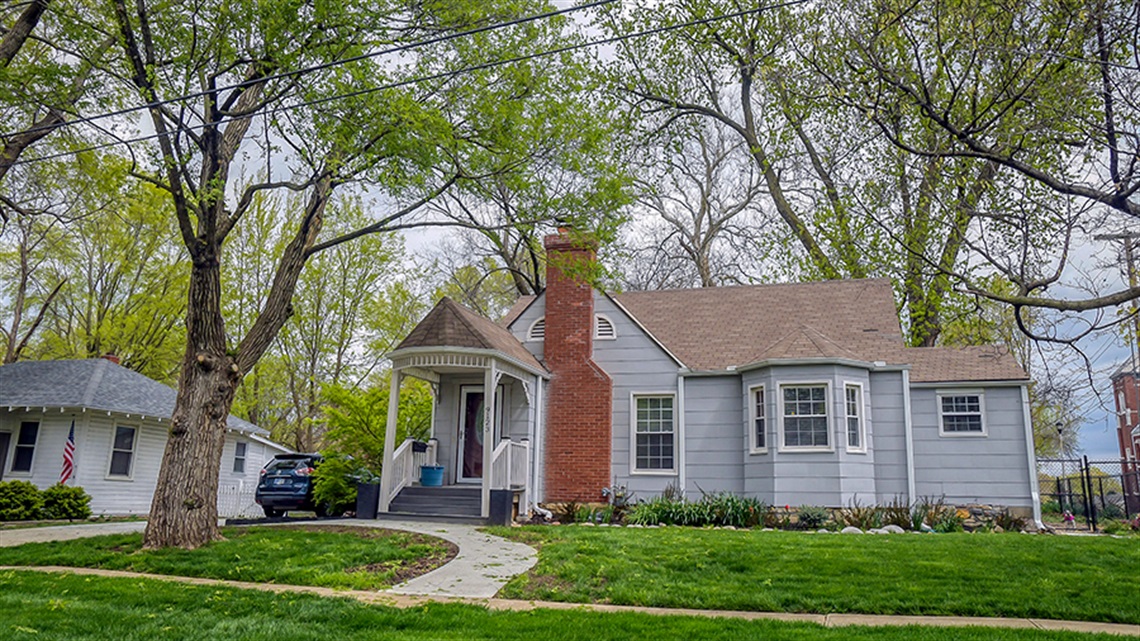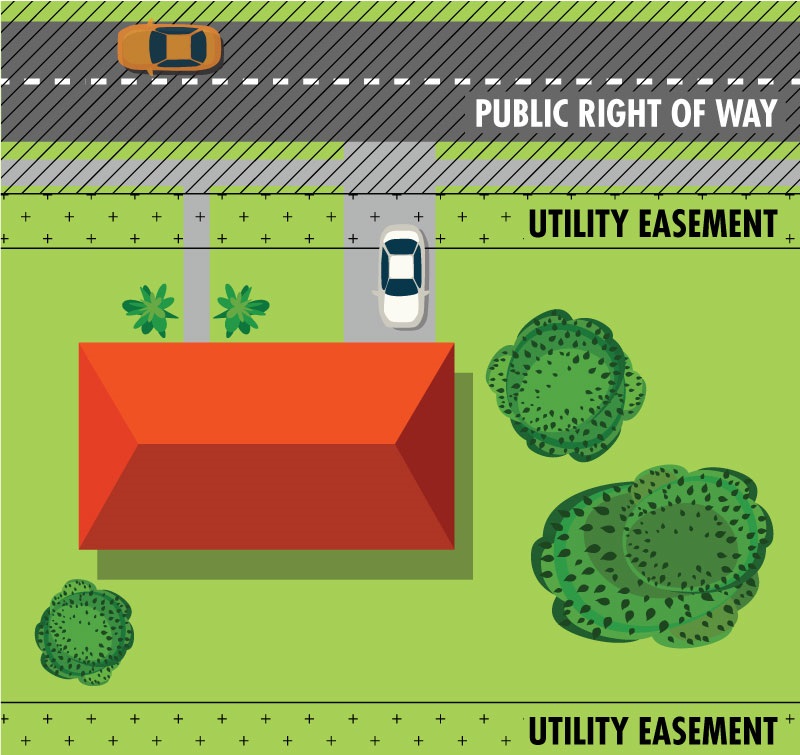Right of Way & Easements

Occasionally, utilities need to perform work on their lines, and these lines may run in your yard in the right of way or easement areas. We often receive questions about these topics, so please browse the questions below.
What is the difference between the public right of way and a public utility easement?
The public right of way is property dedicated to the city for public infrastructure like roadways, storm sewers, sidewalks and streetlights. The state also allows utility providers to use the public right of way for their facilities.
Utility easements are areas of a property dedicated for utility companies to deliver services such as electricity, gas, water, sanitary sewer, telephone, internet and cable. The land belongs to the homeowner, but utilities can access easements to perform routine maintenance, construct improvement projects and repair utility lines during emergencies.

How wide is the public right of way in front of my house?
The right of way for a residential street typically extends 11 feet beyond a street curb, but it can vary depending on the type of road and when it was built.
How wide is the utility easement on my property?
In newer neighborhoods, utility easements are located behind the public right-of-way and are typically 10 feet wide. Other properties have utility easements along rear lot lines that are 10 -15 feet wide and divided between two adjoining lots. There are some easements in side yards as well.
How can I find out where easements and public rights of way are on my property?
All easements should be shown on the title work and plot plan provided at the time your property was purchased.
Who is responsible for maintaining the easement and right of way?
You are expected to take care of the public right of way (to the curb) and utility easement areas as you would the rest of your property. We maintain the sidewalks in the right of way and periodically trim street trees.
Can I prohibit utility contractors from working in my yard?
You can’t prevent a utility from accessing the right of way or easement to perform work, nor can we, according to federal and state law. We encourage utility providers to notify you as a courtesy before starting work.
Does the city regulate utility providers?
We regulate utility companies through franchise agreements. We also monitor where and when work is taking place in the public right of way and public utility easements through a permitting process. We can impose reasonable restrictions on how the work is done.
Do I need approval to work in the right of way or an easement?
Permanent or temporary structures and materials that restrict access to easements or utilities are prohibited. Contact us to request approval for encroachments like fences, irrigation systems and landscaping (including street trees).
Utility companies try to limit damage to encroaching items during construction, but they are not required to replace, pay damages for or reinstall an item that impedes construction. Encroachment into an easement or right of way, even if approved, is at your sole risk.
Questions? Contact Right-of-Way Manager Monty Zimmerman, mzimmerman@lenexa.com or 913.477.7659.